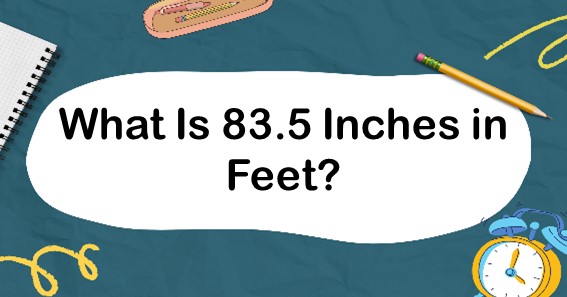
The Problem with the Metric System
The metric system has been around for over a hundred years and while it has its benefits, there are some drawbacks that should be considered. First of all, the metric system is not universal. Countries that use the metric system typically have a strong economy and are in close economic ties with other countries using the metric system. However, many countries do not use the metric system and this can cause confusion for tourists and immigrants. Second, the metric system is based on a decimal system which can be difficult to understand for people who are used to using fractions. Finally, the metric system is not well suited for measuring length because it uses different units for different lengths. Inches To Feet: Why We Should Stop Using The Metric System
The Pros and Cons of Using the Metric System
The metric system is a system of measurement that uses base units of 1/10,000th of a meter, 1/100th of a kilometer, and 1/1000th of a degree. The metric system has many advantages over the English system, including being more consistent and easier to learn. However, there are also some disadvantages to using the metric system. One disadvantage is that it is not universally used throughout the world. Another disadvantage is that it can be difficult to find Conversion Tables for measuring items in the metric system.
Why We Should switch to the Inch System
In the late 1800s, a man named John Metcalfe created a design for a computer that used interconnected vacuum tubes. The idea was groundbreaking, and it would take another 20 years before his idea became reality. But even in the early days of computing, people were already arguing about how to measure things.
One proposal was to use inches instead of meters. The reasoning behind this was that people were familiar with inches, and they had been using them for centuries. In addition, there were advantages to using inches: they could be measured using simple tools like rulers and compasses, and they could be converted easily between units of measurement.
But in the end, the metric system won out. One reason was that it was much more accurate than the alternative. Meters are based on the length of a human hair, while inches are based on the width of a human finger. As a result, measurements made in inches can often be inaccurate by up to 2%.
Another advantage of using meters is that it’s easier to calculate quantities using them than it is using inches. For example, if you wanted to build a house that was exactly 100 feet long but wanted the porch extended 6 feet beyond the front door, you’d need to divide 100 feet by 12 (12 inch), which would give you an approximate measurement of .0625 feet per foot (6/10ths of an inch). Dividing 100 feet by 16 (16 inch), however, would give
The Problem with the Metric System
The metric system is a system of measurement that uses base units of 1/10,000th of a meter, 1/100th of a kilometer, and 1/1000th of a gram. The problem with the metric system is that it’s not Universal. Countries that use the metric system tend to have more similarities in their measurements than countries that use the English system. For example, the size of an inch in the U.S. is different from the size of an inch in Japan. This makes it difficult to trade goods and services between countries. In addition, many people don’t understand how to use the metric system. This has led to problems such as food being sold in sizes that are not appropriate for consumption by consumers in different countries or products being manufactured in one country but marketed in another country.
Why We Should Switch to the Imperial System
The metric system is outdated and in need of an update. The imperial system is more accurate and efficient, and should be the standard by which all measurements are made. The metric system uses base 10 while the imperial system uses base 12, which makes it more convenient to use. There are many benefits to switching to the imperial system, including:
1) More Accurate Measurements – The metric system is more accurate when measuring small distances and details because it uses a base 10 number system, while the imperial system uses a base 12 number system. This means that there are fewer decimal points in a measurement, making it easier to read and understand.
2) Easier to Learn – The metric system is easier to learn than the imperial System because it only uses five basic units (meter, kilogram, Liter, Second, and Fahrenheit). This makes it easy for people who are new to math and science concepts to learn about the metric system.
3) Better for Businesses – businesses that operate internationally or deal with large quantities of measurements will find the imperial System more convenient because it’s faster to convert from one unit of measure to another. Switching over to the imperial System will save businesses time and money in the long run.
The Metric System and its History
The metric system is a system of measurement that uses base units of 1/10,000th of a meter, 1/100th of a meter, 1/1000th of a meter, and so on. The metric system was developed in the 18th century by French scientist Lavoisier and astronomer Jean-Baptiste Colbert. The metric system replaced the traditional measures we use today such as feet and inches.
Some people argue that we should switch to the metric system because it is more accurate. However, others argue that the metric system is confusing and difficult to learn. In any case, the metric system is currently used by only about 20% of the world’s population. It may be time for us to make a change and adopt the metric system for good!
The Benefits of Converting to the Metric System
The metric system is a better way to measure things. It’s simple and easy to use, and it’s the international standard. Here are some of the benefits of converting to the metric system:
1. It’s easier to remember. The metric system is composed of only ten base units, which are easily remembered by prefixing them with a word like centimeter (cm), millimeter (mm), or meter (m). Compare that to the more than twenty units in the English system.
2. It’s more accurate. The metric system is based on natural measurements like distance, weight, and temperature. This means that it’s more accurate than the English system, which is based on imprecise measures like feet and inches.
3. It’s cheaper to use. The metric system isn’t as expensive to use as the English system because there are fewer conversions necessary. For example, 1 kilometer = 1000 meters, whereas 1 mile = 1,760 yards in the English system.
4. It’s universal. The metric system is used all over the world, so it’s easy for people to communicate with each other using this common format.
5. It has a wider range of applications than the English system does. The metric system can be used for a variety of tasks, including engineering, science, mathematics, and business transactions
Conclusion
The metric system is a relic of the past that should be abandoned in favor of more modern systems. The metric system was developed in the 1700s and has not been updated since then. It is not compatible with our current world, nor does it make sense to use it any longer. We need to transition to a new system that better suits our needs and can be more easily understood by everyone. ###


